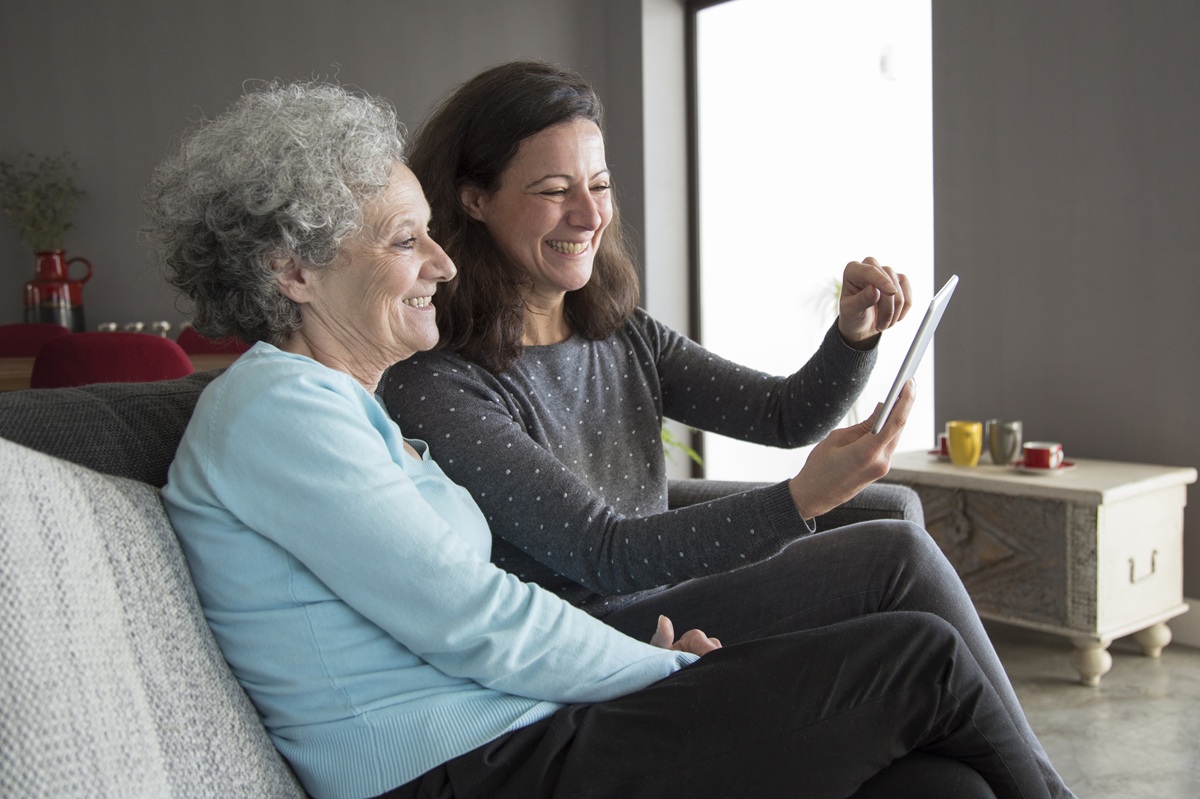Managing Work-Life Balance for Caregivers
Being a caregiver is one of the most selfless and demanding roles a person can take on. From managing medications and daily routines to offering emotional support and companionship, caregivers often do it all while juggling careers, raising children, and managing households. The emotional toll and physical demands can be overwhelming, leaving little time for caregivers to care for themselves.
That’s why setting boundaries and making time for self-care isn’t just important—it’s essential. Whether it’s a quiet moment with a cup of tea, a short walk, or simply saying “no” when your plate is full, carving out space to recharge helps prevent burnout and ensures you can continue to show up for those who rely on you.
At Silverts, we understand the unique challenges family caregivers face. Our adaptive clothing for seniors is thoughtfully designed with comfort, ease, and dignity in mind, making dressing simpler and less stressful for both caregivers and their loved ones. Because when you feel supported, you can better support others.
The Challenges of Balancing Work and Caregiving
Balancing work responsibilities with the daily demands of caregiving is no small feat. Caregivers often find themselves juggling multiple roles—from attending meetings to managing doctor appointments, medication schedules, and meal prep for family members or loved ones. This balancing act can feel overwhelming.
Emotionally, the weight of caregiving responsibilities can be intense. The constant concern for a loved one’s health and well-being, combined with professional stress, often leads to chronic stress and anxiety. Physically, caregivers may experience fatigue from lifting, bathing, or moving the person they’re caring for, all while trying to maintain their own energy for work.
The struggle to do it all is real, and many caregivers feel isolated or unsupported, especially when their responsibilities are invisible to others around them.
How to Balance Life as a Caregiver
#1 Organize and Prioritize
Staying organized is key to managing dual responsibilities. Start by building a caregiving schedule that mirrors your work calendar. Block off time for essential caregiving tasks just as you would for meetings or deadlines.
Digital tools like Google Calendar, Todoist, or caregiving-specific apps can be lifesavers. Use them to set reminders for medications, appointments, and check-ins so nothing falls through the cracks.
#2 Leverage Employee Benefits
Your employer may offer more support than you realize. Take the time to review your company’s policies on caregiving responsibilities. Many employers offer benefits like flexible work hours, paid family leave, or employee assistance programs.
Don’t hesitate to have a proactive conversation with your HR department about what’s available. If your employer understands your situation, remote work, adjusted schedules, or reduced hours are often possible.
#3 Communicate Openly with Your Employer
Open communication is essential. Let your manager or supervisor know about your caregiving role so they can better understand your needs and support you.
Establish clear expectations and boundaries, such as not answering work emails during medical appointments or needing flexibility during emergencies. Transparency fosters trust and helps you manage both roles more effectively.
#4 Use Respite Care Services
Burnout is a real risk for caregivers, which is why taking breaks is a necessity. Respite care provides short-term relief and allows you to rest, recharge, or focus on other responsibilities.
Explore local community resources, non-profit organizations, or government programs that offer respite services and other types of care for seniors, depending on your loved one’s needs. Even a few hours a week can make a big difference in your mental and physical well-being.
#5 Embrace Support Networks
You don’t have to do this alone. Support groups, whether in person or online, offer a space to share experiences, advice, and emotional support with others in similar situations.
Look for local caregiver support programs or ask community centers and healthcare providers for recommendations. A strong support network can ease the emotional burden and help you feel more connected and empowered.
Self-Care for Caregivers: Staying Healthy While Caring for Others
It’s easy for caregivers to put their own needs last, making self-care essential. Ignoring your well-being can lead to burnout, which often manifests as emotional exhaustion, irritability, sleep issues, or even symptoms of caregiver grief—a complex emotional experience that’s common but not always talked about.
Recognize the signs early and take proactive steps. Block out regular time for yourself, whether it’s a 10-minute meditation, a walk around the block, or a weekly hobby. Staying active, eating well, and staying connected with friends can do wonders for your energy and mental clarity.
Engaging in hobbies or creative outlets is a great way to reclaim your identity outside of caregiving and maintain a sense of joy and balance in your day-to-day living.
The Importance of Boundaries for Caregivers
Boundaries are vital to protecting your time, energy, and emotional health. Start by clearly communicating with other family members about what you can and cannot do. Set realistic expectations and be honest about your limits.
If you have siblings or other relatives, discuss how caregiving duties can be shared more equitably. Regular check-ins with family members can help ensure you’re not bearing the entire load alone.
Learn to say no. It’s okay to decline additional tasks or requests that don’t align with your current capacity. Protecting your boundaries allows you to be more present and effective in both your caregiving and work roles.
Simplify Your Caregiver Duties with Silverts’ Adaptive Clothing
Our adaptive clothing for women and men from Silverts can make a real difference in your daily caregiving routine. With features like magnetic closures, side or back openings, and easy-access designs, dressing and undressing your loved one becomes quicker and less stressful.
These thoughtfully designed clothes support dignity and independence for the person you’re caring for, much like innovations in technology for seniors that enhance safety and comfort. Silverts’ adaptive wear is ideal for those with limited mobility and can significantly streamline one of the most routine—but time-consuming—daily tasks.
It’s a simple solution that brings comfort, efficiency, and peace of mind to both caregivers and their loved ones.
Finding Balance and Peace of Mind as a Caregiver
Caregiving can be incredibly rewarding, but it comes with real challenges. By staying organized, communicating openly, and setting firm boundaries, you can protect your health and well-being while caring for others.
Products like Silverts’ adaptive clothing are designed with caregivers in mind. We offer practical, compassionate solutions that lighten your load and support your loved ones’ comfort.
Above all, remember that taking care of yourself is not a luxury—it’s a necessity. With the right tools, support, and mindset, you can find balance and peace of mind in your caregiving journey while continuing to show up for your job and the people who count on you.





No Comments